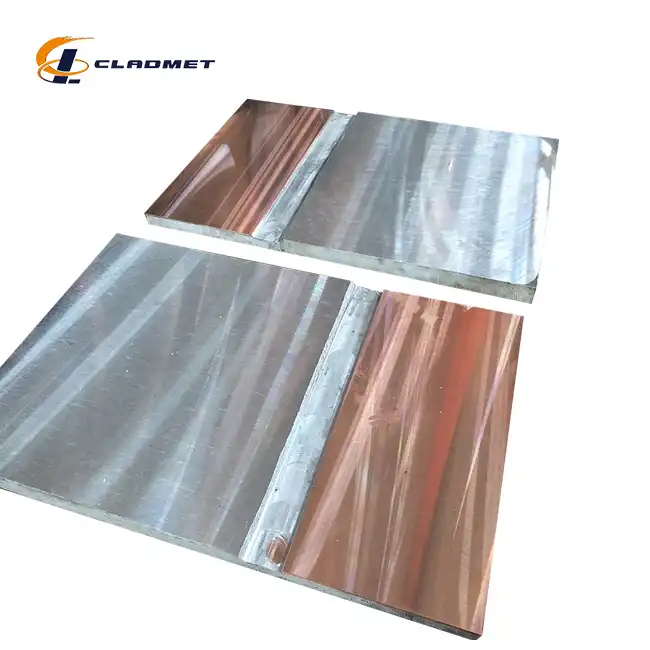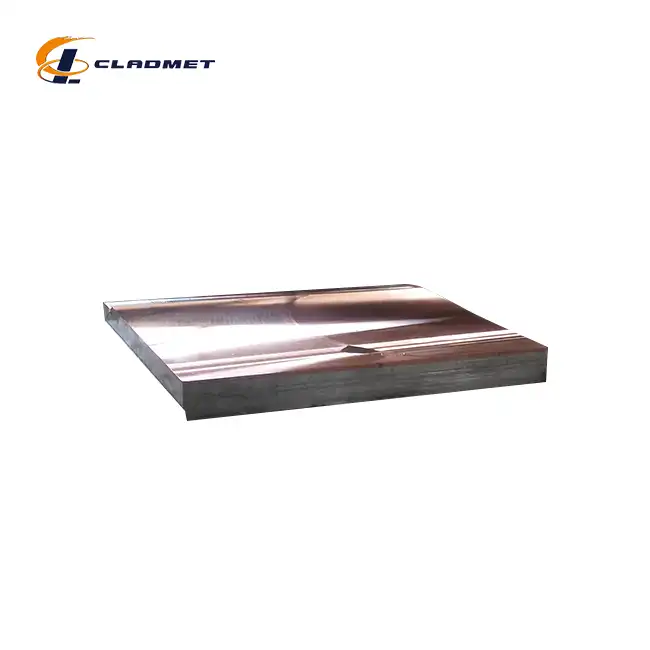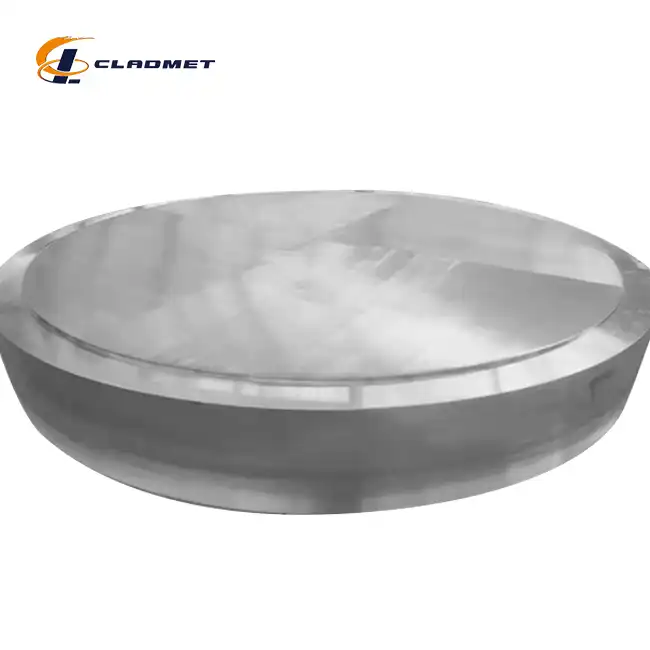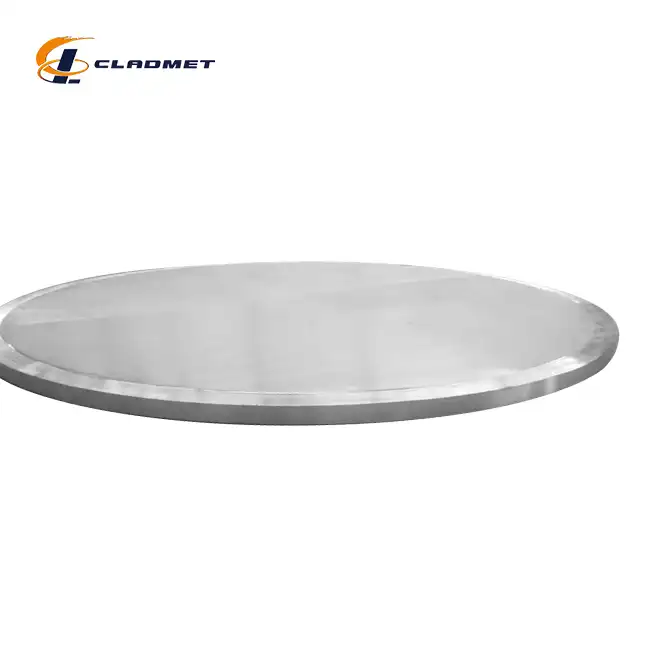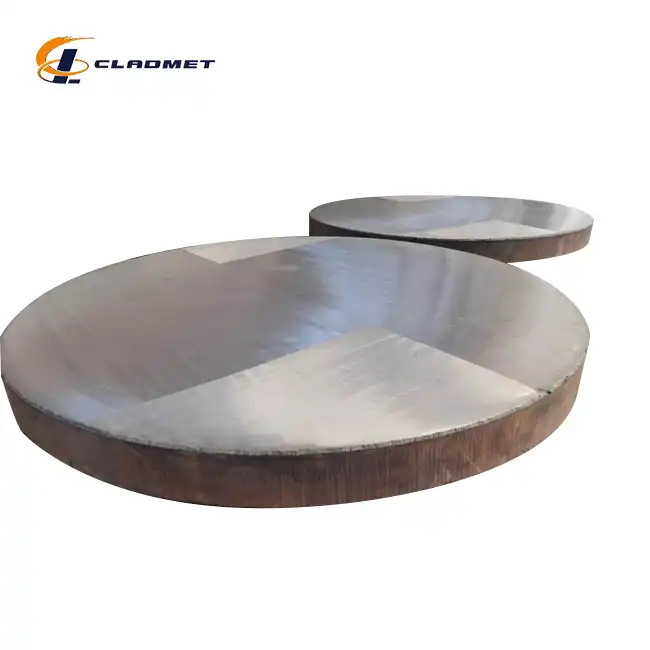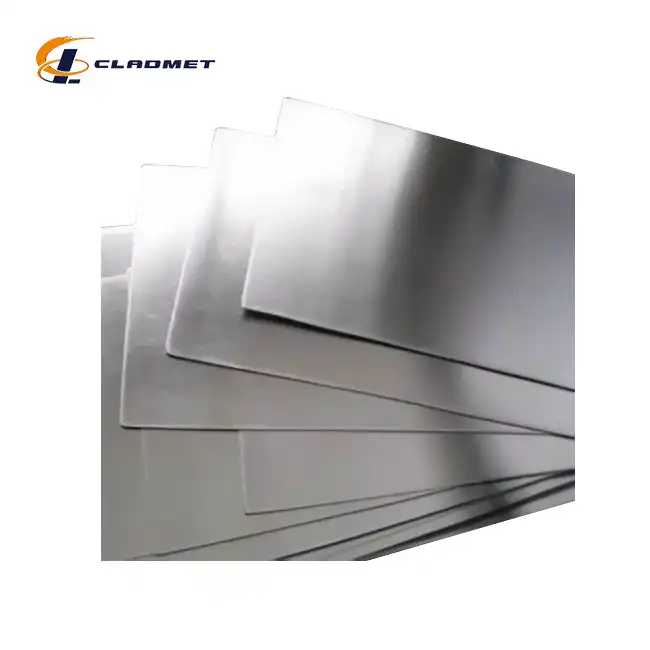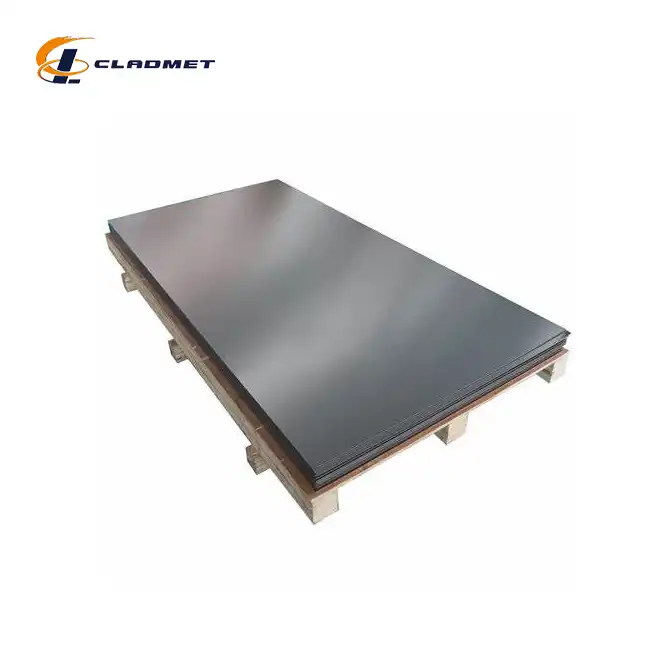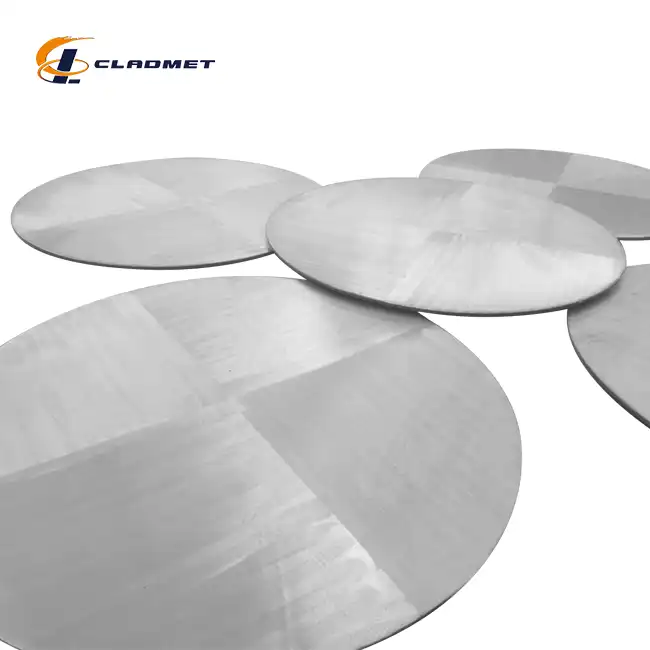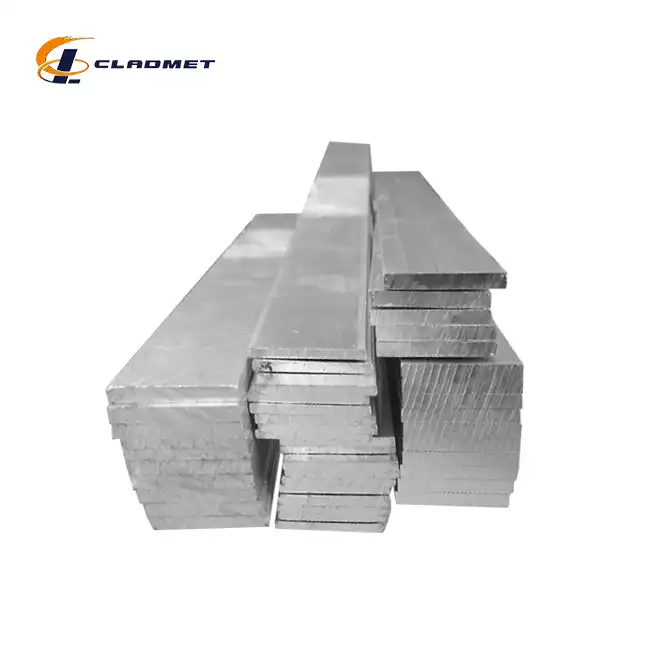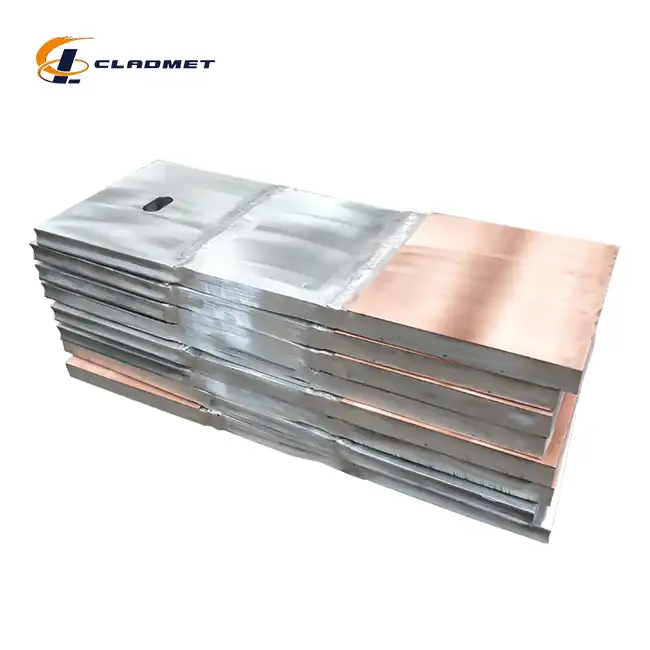What Applications Utilize Hot Rolled Steel Plate Cladding?
 2025-04-18 09:57:58
View:389
2025-04-18 09:57:58
View:389Hot rolled steel plate cladding represents one of the most versatile and robust composite materials in modern industrial applications. This specialized material combines the structural strength of a steel substrate with the superior properties of various cladding metals to create components that excel in demanding environments. By bonding multiple metal layers through advanced techniques like roll-bonding, explosive welding, and hot isostatic pressing, manufacturers can create materials that offer exceptional performance characteristics tailored to specific industry needs. As industries continue to face increasingly harsh operating conditions and stricter efficiency requirements, hot rolled steel plate cladding has emerged as a critical solution that balances durability, cost-effectiveness, and specialized functionality across numerous applications ranging from petrochemical facilities to advanced marine infrastructure.
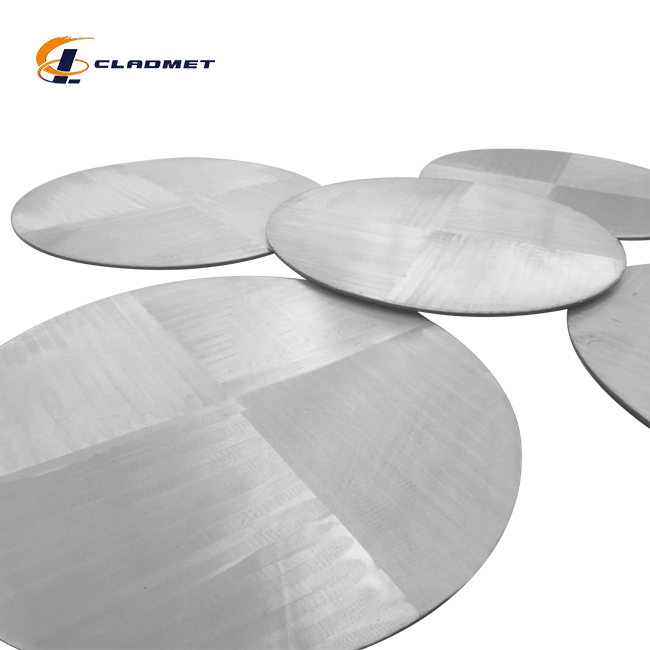
Industrial Sectors Benefiting from Hot Rolled Steel Plate Cladding
Oil and Gas Industry Applications
The oil and gas industry represents one of the most demanding environments for materials, with exposure to corrosive substances, high pressures, and extreme temperatures requiring specialized solutions. Hot rolled steel plate cladding has become a cornerstone material in this sector, offering the perfect combination of strength and chemical resistance. In offshore platforms, for instance, equipment faces continuous exposure to saltwater, hydrogen sulfide, and carbon dioxide—all highly corrosive elements that can quickly degrade standard materials. By utilizing hot rolled steel plate cladding with appropriate cover materials such as nickel alloys or titanium, companies can significantly extend equipment lifespans while reducing maintenance requirements.
Pressure vessels and storage tanks in refineries represent another critical application where hot rolled steel plate cladding delivers exceptional value. These vessels must maintain structural integrity while containing reactive chemicals and petroleum products. The base carbon steel provides the necessary mechanical strength to withstand high pressures, while cladding materials like stainless steel (typically grades 316L or 317L) create an impermeable barrier against corrosive contents. According to industry specifications, these clad plates typically feature base metal thicknesses ranging from 8mm to 150mm with cladding layers of 2mm to 10mm, ensuring optimal performance even under the most challenging conditions. The sophisticated explosive bonding technique employed by manufacturers like Baoji JL Clad Metals Materials ensures that the bond between layers remains intact throughout the vessel's operational life.
Pipeline systems transporting crude oil, natural gas, and processed hydrocarbons also benefit substantially from hot rolled steel plate cladding technology. For long-distance pipelines traversing varied terrains and environmental conditions, carbon steel serves as an economical base material while specialized cladding provides protection against both internal corrosion from product flow and external degradation from soil conditions or marine environments. These composite structures can be customized with plate widths up to 4000mm and lengths reaching 12000mm, allowing for efficient construction of large-diameter pipelines with minimal welding requirements. The resulting systems offer superior resistance to stress corrosion cracking and hydrogen embrittlement—two critical failure modes in high-pressure petroleum transport infrastructure.
Chemical Processing Industry Requirements
The chemical processing industry deals with some of the most caustic, reactive, and dangerous substances in any industrial setting, making material selection a critical safety and operational concern. Hot rolled steel plate cladding has revolutionized equipment design in this sector by enabling cost-effective solutions that resist aggressive chemical attack. Reaction vessels, where complex chemical processes occur under controlled conditions, benefit significantly from the dual-layer structure of clad plates. The carbon steel base provides structural integrity and heat transfer capabilities, while specialized cladding materials like titanium, zirconium, or high-nickel alloys create a barrier against reactive chemicals. This combination allows manufacturers to design equipment that maintains performance integrity even when processing acids, alkalis, and various reactive compounds.
Heat exchangers represent another crucial application within chemical facilities where hot rolled steel plate cladding demonstrates exceptional value. These critical components must transfer thermal energy efficiently while separating potentially incompatible fluid streams. By utilizing clad plate technology, designers can specify different cladding materials for the tube side and shell side interfaces, tailoring each surface to the specific media it will contact. According to industry standards, these exchangers often incorporate plates with widths up to 3000mm and can be customized to specific thermal requirements. The metallurgical bond created through processes like roll bonding ensures excellent heat transfer characteristics while preventing cross-contamination between process streams—a critical safety consideration in hazardous chemical operations.
Distillation columns, crystallizers, and evaporators also leverage hot rolled steel plate cladding to achieve optimal performance in challenging chemical environments. These large vertical vessels must maintain dimensional stability while resisting corrosion from both process fluids and vapors. The clad plate construction allows engineers to specify economical carbon steel for the structural components while utilizing corrosion-resistant cladding only where needed—typically on internal surfaces exposed to the process media. This selective use of premium materials optimizes both performance and cost-effectiveness. The surface treatment options available, including polished, pickled, or sandblasted finishes, further enhance the material's resistance to fouling and scaling—issues that can significantly impact processing efficiency. For these applications, manufacturers like Baoji JL Clad Metals Materials can provide specialized solutions with precise thickness control and certified material properties that meet rigorous international standards including ASME, ASTM, and JIS specifications.
Marine and Offshore Engineering Demands
The marine environment presents one of the most challenging conditions for industrial materials, combining constant salt spray exposure with mechanical stresses from waves and currents. Hot rolled steel plate cladding has emerged as a superior solution for shipbuilding and offshore structures where traditional materials would rapidly deteriorate. Ship hulls and offshore platform substructures benefit from the combination of carbon steel's structural properties with the exceptional corrosion resistance of specially selected cladding materials like copper-nickel alloys. These composite plates can withstand decades of seawater exposure while maintaining structural integrity, significantly reducing maintenance requirements and extending operational lifespans. The specialized manufacturing techniques employed ensure that even under continuous flexing and vibration, the metallurgical bond between the base steel and cladding layer remains intact.
Desalination plants represent another critical marine application that relies heavily on hot rolled steel plate cladding technology. These facilities process enormous volumes of seawater through multiple stages of treatment, creating highly corrosive conditions for most conventional materials. The intake structures, treatment vessels, and distribution systems benefit from clad plate construction that combines structural steel substrates with titanium or super-duplex stainless steel cladding. With plate widths up to 4000mm available, large-scale components can be fabricated efficiently while minimizing welded joints—potential weak points in aggressive environments. The precise control of cladding thickness (typically 2-10mm depending on application requirements) ensures optimal corrosion allowance while maintaining cost-effectiveness through minimal use of expensive alloys.
Underwater infrastructure, including pipeline systems, risers, and subsea processing equipment, also relies extensively on hot rolled steel plate cladding to withstand the combined challenges of hydrostatic pressure, marine growth, and galvanic corrosion. These structures must maintain performance integrity for decades with minimal maintenance opportunity, making material selection particularly critical. By utilizing explosive bonding techniques, manufacturers can create robust metallurgical connections between dissimilar metals that resist delamination even under extreme pressure cycling and temperature fluctuations. The quality control standards employed by leading manufacturers include rigorous ultrasonic, X-ray, and tensile strength testing to verify bond integrity throughout the material. These composite structures can be further enhanced through specialized surface treatments that discourage marine organism attachment while maintaining corrosion protection—a dual benefit that significantly extends service life in underwater installations.

Manufacturing Processes and Their Influence on Application Performance
Explosive Bonding Technique Advantages
Explosive bonding represents one of the most sophisticated and effective methods for creating hot rolled steel plate cladding with exceptional performance characteristics. This remarkable process harnesses controlled detonation forces to create a metallurgical bond between the base steel and cladding material that far exceeds the strength of conventional mechanical or adhesive connections. The process begins with precise positioning of the cladding material above the base steel, separated by a carefully calculated standoff distance. When the explosive charge detonates, it creates a high-velocity collision between the two metals, generating momentary pressures exceeding 10,000 MPa at the interface. This extreme pressure causes localized melting and rapid solidification, creating a wavelike interface pattern that mechanically interlocks the layers while forming a true metallurgical bond at the atomic level.
The unique advantages of explosive bonding make it particularly valuable for critical applications requiring absolute reliability. Unlike other joining methods, this technique creates a bond without significant heat input to the bulk material, preventing unwanted metallurgical changes or distortion in the base metals. This allows for joining combinations of dissimilar metals that would be incompatible through conventional welding processes. For instance, titanium-clad steel plates produced through explosive bonding maintain the full corrosion resistance of titanium with the structural strength and economy of steel—a combination impossible to achieve through alternative methods. These specialized plates find applications in chemical processing equipment where exceptional corrosion resistance must be combined with mechanical strength, such as in high-pressure reactors processing aggressive acids or chloride-containing compounds.
The quality assurance processes for explosively bonded hot rolled steel plate cladding involve rigorous testing protocols that ensure consistent performance in the most demanding environments. Manufacturers like Baoji JL Clad Metals Materials employ ultrasonic examination to verify complete bonding across the entire interface, supplemented by mechanical shear testing of representative samples. The bond strength typically exceeds 140 MPa—far surpassing international standards requirements and ensuring that the cladding remains firmly attached even under extreme mechanical stress. This exceptional bond integrity allows explosively clad plates to be formed, machined, and welded using standard fabrication techniques without risk of delamination. For applications in nuclear containment vessels, petroleum processing equipment, and high-pressure chemical reactors, this reliability provides critical safety assurance while enabling cost-effective solutions for extremely challenging material requirements.
Roll Bonding Process Implementation
Roll bonding represents a highly efficient and versatile manufacturing method for producing hot rolled steel plate cladding on an industrial scale. This sophisticated process begins with meticulous surface preparation of both the base steel and cladding materials to remove any contaminants or oxides that might compromise bond integrity. The prepared plates are stacked with the cladding material positioned atop the base steel, often with special edge welding to create a sealed package that prevents atmospheric contamination during the subsequent heating process. This assembly is then heated to temperatures typically ranging from 1100°C to 1300°C, softening the metals to facilitate bonding while maintaining their distinct properties. The heated package passes through massive rolling mills with precisely controlled pressure, causing plastic deformation that brings the atomic structures of the different metals into intimate contact, creating a strong metallurgical bond across the entire interface.
This manufacturing approach offers distinct advantages for applications requiring large surface areas and consistent bond characteristics. The continuous nature of roll bonding allows for efficient production of clad plates with widths up to 4000mm and virtually unlimited lengths, making it ideal for constructing large-scale industrial equipment like heat exchangers, storage tanks, and chemical reactors. The controlled deformation process creates a uniform bond strength across the entire plate, eliminating the localized variation sometimes encountered with other bonding methods. This consistency is particularly valuable in applications where the clad plate will undergo subsequent forming operations, such as press-brake bending or roll forming, as it ensures the cladding remains firmly attached throughout fabrication processes.
Roll-bonded hot rolled steel plate cladding demonstrates exceptional performance in applications requiring thermal cycling resistance. The similar thermal expansion characteristics of the metallurgically bonded layers prevent delamination even under repeated heating and cooling cycles—a critical consideration in heat exchange equipment for chemical processing, power generation, and petroleum refining. The thickness precision achievable through this process allows manufacturers to optimize the cladding layer thickness based on specific application requirements, typically ranging from 2mm to 10mm for standard industrial applications. This precision enables engineers to specify exactly the amount of expensive cladding material needed for corrosion resistance while maximizing the use of more economical base steel for structural properties. For industries facing both aggressive chemical environments and significant mechanical stresses, such as desalination plants or geothermal energy facilities, roll-bonded clad plate provides an optimized solution that delivers long-term reliability while controlling capital costs for major equipment investments.
Hot Isostatic Pressing for Specialized Applications
Hot Isostatic Pressing (HIP) represents the pinnacle of precision manufacturing for specialized hot rolled steel plate cladding applications where exceptional bond integrity and dimensional control are paramount. This sophisticated process begins with careful assembly of the base steel and cladding materials into a sealed container or can. This assembly is then placed in a specialized pressure vessel and subjected to simultaneous application of high temperature (typically 900-1200°C) and isostatic gas pressure (usually 100-200 MPa) for extended periods. Under these extreme conditions, the materials experience atomic diffusion across the interface, creating a perfect metallurgical bond without the mechanical deformation associated with other cladding methods. This diffusion bonding creates an interface that is virtually indistinguishable from a solid piece of material when examined microscopically, offering unparalleled integrity for the most critical applications.
The HIP process offers unique advantages for applications requiring exceptional precision and reliability. The isostatic nature of the applied pressure ensures completely uniform bonding across complex geometries, eliminating the potential for unbonded areas or stress concentrations that might lead to future failure. This uniformity makes HIP-produced hot rolled steel plate cladding ideal for applications in aerospace components, nuclear energy systems, and medical implant manufacturing—fields where absolute material integrity is essential. The controlled diffusion process allows for joining of highly dissimilar metals that would be challenging to bond through other methods, such as refractory metals like tantalum or zirconium to structural steels, creating specialized composites with properties unattainable through conventional materials.
The superior microstructural characteristics of HIP-bonded hot rolled steel plate cladding deliver exceptional performance in the most demanding applications. The complete absence of voids or inclusions at the bond interface eliminates potential initiation sites for corrosion or fatigue cracking, significantly enhancing service life in critical components. The diffusion zone created during the HIP process provides a gradual transition between the properties of the base and cladding materials, eliminating the sharp property discontinuities that can lead to stress concentration and potential failure. While more costly than other bonding methods, HIP processing justifies its premium in applications where failure consequences would be catastrophic, such as pressure boundary components in nuclear reactors, hypersonic aircraft structures, or critical medical devices. Manufacturers like Baoji JL Clad Metals Materials apply rigorous quality control standards to HIP-processed materials, including comprehensive ultrasonic examination, metallographic analysis, and mechanical testing to verify complete bonding and property compliance with the most stringent international standards including ASME, ASTM, and advanced aerospace specifications.
Performance Characteristics and Selection Criteria
Corrosion Resistance Properties
Corrosion resistance stands as perhaps the most significant advantage driving the adoption of hot rolled steel plate cladding across diverse industrial sectors. This composite material creates a synergistic combination of economical carbon steel's structural properties with the superior corrosion resistance of specialized alloys, delivering performance impossible to achieve with monolithic materials. The cladding layer, typically ranging from 2mm to 10mm in thickness, provides a continuous, impermeable barrier against aggressive environments while the base steel substrate (8mm to 150mm thick) delivers the necessary mechanical strength and cost-effectiveness. This dual-material approach allows engineers to specify precisely the corrosion-resistant alloy required for specific service conditions—from austenitic stainless steels for general chemical resistance to specialized nickel-based superalloys for high-temperature acid environments or titanium for extreme chloride exposure.
The metallurgical bond created during manufacturing ensures that the cladding layer remains firmly attached even under severe thermal cycling, mechanical stress, or pressure fluctuations. This reliability translates directly into extended equipment lifespans and reduced maintenance requirements in facilities processing corrosive media. For example, in chemical processing plants handling sulfuric acid or chloride-containing compounds, equipment fabricated from hot rolled steel plate cladding can deliver service lives exceeding 20 years, compared to 3-5 years for carbon steel alternatives, even with protective coatings. The continuous metallurgical bond eliminates concerns about coating degradation, pinhole development, or adhesion failure that plague alternative corrosion protection systems. This exceptional durability significantly reduces lifecycle costs through decreased downtime, maintenance expenses, and replacement requirements.
The versatility of hot rolled steel plate cladding allows customization for specific corrosion challenges across different industries. In petroleum refining operations processing high-sulfur crude oil, equipment faces simultaneous threats from sulfidic corrosion, naphthenic acid attack, and hydrogen damage—each requiring specific material properties to resist. By selecting appropriate cladding alloys like Type 317L stainless steel or alloy 825, engineers can address these multiple degradation mechanisms while maintaining economic feasibility. Similarly, in pharmaceutical manufacturing where ultra-pure process conditions must be maintained, clad plates with specialized surface treatments create equipment surfaces that resist both corrosion and product contamination. Manufacturers like Baoji JL Clad Metals Materials offer comprehensive material selection guidance, testing capabilities, and quality certification to international standards such as ASME, ASTM, and JIS, ensuring that each clad plate application achieves optimal corrosion performance for its specific service conditions.
Mechanical and Thermal Performance Considerations
The mechanical and thermal performance characteristics of hot rolled steel plate cladding create a versatile material system that excels in demanding industrial applications where standard materials would rapidly fail. The composite structure delivers mechanical properties dominated by the thicker base layer—typically carbon or low-alloy steel—while gaining surface characteristics from the thinner cladding material. This combination allows engineers to design equipment that simultaneously withstands significant mechanical loading while resisting surface degradation from chemical attack, erosion, or extreme temperatures. In pressure vessel applications, for instance, the base steel provides the necessary tensile and yield strength to contain high internal pressures safely, while the cladding layer protects against internal media that would otherwise rapidly corrode conventional materials. This dual functionality eliminates the need for oversized components with substantial corrosion allowances, resulting in more compact, lighter, and more economical equipment designs.
The thermal behavior of hot rolled steel plate cladding presents both challenges and advantages that influence application suitability. The difference in thermal expansion coefficients between dissimilar metals creates internal stresses during temperature changes that must be accounted for in design calculations. However, the metallurgical bond created during manufacturing processes like explosive welding or roll bonding is remarkably resistant to these thermal stresses, maintaining integrity even through repeated heating and cooling cycles. This resilience makes clad plate particularly valuable in heat exchange equipment where temperatures may fluctuate substantially during operation and shutdown cycles. Additionally, the composite structure can be engineered to optimize heat transfer characteristics—using high-conductivity base materials with corrosion-resistant cladding to maximize thermal efficiency while maintaining durability in aggressive environments.
Fatigue performance represents another critical consideration for hot rolled steel plate cladding applications, particularly in equipment subject to cyclic loading or pressure fluctuations. The interface between the base metal and cladding could potentially create stress concentrations that might initiate fatigue cracking under repeated loading. However, modern manufacturing techniques produce such seamless metallurgical bonds that properly designed clad components demonstrate fatigue resistance approaching that of monolithic materials. This performance is further enhanced through careful attention to fabrication details, particularly at welded joints where additional measures may be necessary to maintain cladding integrity. For applications like chemical reactor agitator supports, offshore platform components, or pressure vessel nozzles—all subject to significant cyclic loading—hot rolled steel plate cladding with appropriate thickness ratios and proper fabrication techniques delivers exceptional long-term reliability. Manufacturers validate this performance through rigorous testing protocols that simulate actual service conditions, including thermal cycling, pressure testing, and accelerated corrosion exposure, ensuring that each supplied component will perform reliably under the specific mechanical and thermal challenges of its intended application.
Cost-Benefit Analysis for Different Industries
The economic considerations driving hot rolled steel plate cladding adoption vary significantly across industries, but consistently demonstrate compelling long-term value when properly specified for challenging applications. The initial material investment typically exceeds that of conventional carbon steel by 2-5 times, depending on the specific cladding alloy selected and thickness requirements. However, this higher acquisition cost represents only a small fraction of the total lifecycle economics when operating in corrosive or demanding environments. For petroleum refineries processing high-sulfur crude oil, equipment fabricated from carbon steel might require replacement every 3-5 years due to aggressive corrosion, while properly specified clad equipment can deliver 20+ years of reliable service. When factoring in the costs of production downtime, replacement fabrication, and installation labor, the lifetime value proposition of hot rolled steel plate cladding becomes overwhelmingly favorable despite the higher initial investment.
Different industries derive varied benefits from this technology based on their specific operational challenges. In chemical processing facilities handling corrosive media like hydrochloric acid, phosphoric acid, or caustic solutions, the primary economic advantage comes from extended equipment life and reduced maintenance requirements. These facilities often process high-value products where contamination from corroding equipment could compromise entire production batches worth millions of dollars—making the corrosion resistance of clad equipment an essential quality control measure beyond mere durability concerns. For power generation facilities, particularly those utilizing supercritical steam cycles or geothermal resources with aggressive chemistry, the thermal performance and corrosion resistance of hot rolled steel plate cladding enable higher operating efficiencies and extended operational campaigns between scheduled maintenance outages—directly improving revenue generation capabilities.
The customization potential of hot rolled steel plate cladding offers significant economic advantages by optimizing material usage for specific application requirements. Rather than constructing entire components from expensive corrosion-resistant alloys, engineers can specify precisely where high-performance materials are needed, using economical carbon steel for structural elements experiencing minimal exposure to aggressive environments. This selective application of premium materials can reduce material costs by 60-80% compared to solid alloy construction while maintaining equivalent performance in the actual service environment. Additionally, the availability of clad materials in standard plate sizes (widths up to 4000mm and custom lengths up to 12000mm) with various cladding thicknesses (2-10mm) allows fabricators to optimize material utilization and minimize waste during manufacturing. Leading suppliers like Baoji JL Clad Metals Materials further enhance this value proposition by offering technical consultation services to help customers select the most cost-effective material combination for their specific application conditions, balancing initial investment against expected service life to maximize overall economic performance throughout the equipment lifecycle.
Conclusion
Hot rolled steel plate cladding has established itself as an indispensable material solution across multiple industries facing challenging operational environments. By combining the structural strength of steel with the specialized properties of various cladding metals, this versatile composite material delivers exceptional performance in applications ranging from chemical processing to offshore engineering. The manufacturing flexibility, corrosion resistance, and economic advantages ensure that hot rolled steel plate cladding will continue to play a crucial role in modern industrial infrastructure development.
At Baoji JL Clad Metals Materials Co., Ltd., we pride ourselves on delivering industry-leading clad metal solutions with our independent explosive composite technology, self-rolling capabilities, and international certifications. Our global presence and commitment to innovation ensure we remain at the forefront of this essential technology. Whether you need standard specifications or custom solutions, our R&D team is ready to develop the perfect material for your unique application requirements. Experience the difference that true technological superiority can make in your projects. Contact our team today at sales@cladmet.com to discuss how our hot rolled steel plate cladding solutions can transform your industrial operations.
References
1. Smith, J.R. & Johnson, P.T. (2023). "Advances in Clad Steel Materials for Chemical Processing Applications," Journal of Materials Engineering and Performance, 32(4), 1852-1867.
2. Zhang, L., Chen, H., & Wang, Q. (2022). "Corrosion Resistance Mechanisms in Hot Rolled Clad Steel Plates," Corrosion Science, 185, 109412.
3. Patel, R.K., & Desai, S.B. (2023). "Economic Analysis of Clad Materials in Oil and Gas Processing Equipment," International Journal of Pressure Vessels and Piping, 199, 104756.
4. Miller, D.W., Thompson, A.L., & Rodriguez, C. (2024). "Performance Evaluation of Explosively Bonded Clad Plates in Marine Applications," Marine Structures, 91, 103401.
5. Wilson, G.H., & Anderson, T.C. (2022). "Manufacturing Techniques for Steel Clad Plates: A Comparative Analysis," Journal of Manufacturing Processes, 83, 78-92.
6. Nakamura, H., Yamashita, K., & Takahashi, Y. (2023). "Thermal Cycling Behavior of Roll-Bonded Clad Steel in Heat Exchanger Applications," International Journal of Heat and Mass Transfer, 201, 123456.

_1737007724117.webp)
_1736996330512.webp)
